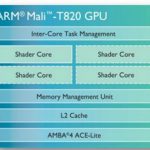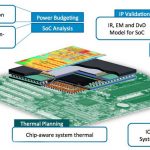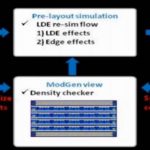You are currently viewing SemiWiki as a guest which gives you limited access to the site. To view blog comments and experience other SemiWiki features you must be a registered member. Registration is fast, simple, and absolutely free so please,
join our community today!
WP_Term Object
(
[term_id] => 157
[name] => EDA
[slug] => eda
[term_group] => 0
[term_taxonomy_id] => 157
[taxonomy] => category
[description] => Electronic Design Automation
[parent] => 0
[count] => 4325
[filter] => raw
[cat_ID] => 157
[category_count] => 4325
[category_description] => Electronic Design Automation
[cat_name] => EDA
[category_nicename] => eda
[category_parent] => 0
[is_post] =>
)
Antun Domic is the GM of the Design Group at Synopsys. I sat down with him a couple of weeks ago.
His name is Croatian although, of course, there was no Croatia back then it was part of Yugoslavia. But in fact he grew up in Chile and went to university there where he studied EE and math. He came to the US as a grad student and did a PhD at MIT in … Read More
ARM is a well-known semiconductor IP provider and they often create a reference design so that SoC companies can have a starting point to work with. On the GPU side of IP the ARM engineers have an architecture called Mali, and a recent webinar hosted by Synopsys reviewed how the physical design area was minimized by using a combination… Read More
Last month in DAC I could see some of the top innovations in the EDA world. EDA is a key enabler for advances in semiconductor designs. Among a number of innovations worth mentioning (about which I blogged just after DAC), the integration of Mentor’s Veloce with ANSYS’ PowerArtist for power analysis of live applications caught my… Read More
Coventor just rolled out the latest version of SEMulator3D, their virtual fabrication tool. Very conveniently it is SEMICON West this week and they have a booth. I dropped by and got a demo from David Fried, Coventor’s CTO about all the new stuff. He’s very proud of SEMulator3D’s new logo but mostly he is proud… Read More
As the number of CPU, GPU, and IP is growing in an SoC, power management is becoming more and more a complex task in itself. A single tool or methodology may not be enough for complete power management and verification of an SoC. In an SoC, there can be multiple modes of operations involving hardware and software interactions, different… Read More
Only one company at the recent DAC conference and exhibit had a set of four interacting disciplines: Fluids, Structures, Electronics and Systems. Did you guess that the company was ANSYS? I get so IC focused at times that I almost forget that chips plug into boards, that boards become systems, and that systems drive and control mechanical… Read More
The SoC design teams are usually divided between front-end and back-end specialties. It is neither practical nor advisable to combine the two teams in order to better tackle the back-end issues upfront during the front-end design. However, a common problem is that the issues at the layout stage have very little scope for resolution… Read More
The need for ever-connected devices is skyrocketing. As I fiddle with my myriad of electronic devices that seem to power my life, I usually end up wishing that all of them could be interconnected and controlled through the Internet. The truth is, only a handful of my devices are able to fulfill that wish, but the need is there and developers… Read More
Once upon a time, RAM technology was the driver of the semiconductor process. DRAM products were the first to be designed on a newest technology node and DRAM was used as a process driver. It was 30 years ago and the most aggressive process nodes were ranging between 1um and 1.5 um (1 500 nm!). Then in the 1990 the Synchronous Dynamic … Read More
My first exposure to automating IC layout was back in the 1980’s at Intel where I coded a layout compiler to auto-generate about 6% of a graphics processor chip. The need to use automation for IC layout continues today, and with the advent of FinFET technology there are some new challenges like layout gradient effects that … Read More










AI RTL Generation versus AI RTL Verification